How to change the gasket in the faucet in the kitchen or in the bathroom
The weakest part of the water supply system in the house is shut-off and control valves. Damage to valves and mixers occurs for various reasons, but most often leaks occur due to violations of the tightness of the joints and wear of the seals. Not everyone knows how to change the gasket in the tap, but you can easily cope with this task if you have the right tool and follow the recommendations of specialists exactly.
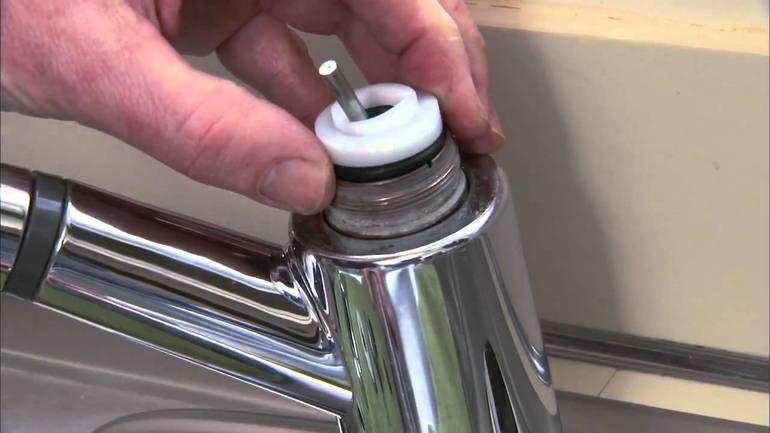
Causes and diagnosis of breakdowns
Most often, the inability to completely shut off water, leakage from a closed tap, and reduce pressure arise when a small part of it - a gasket - is damaged. Damage can result from:
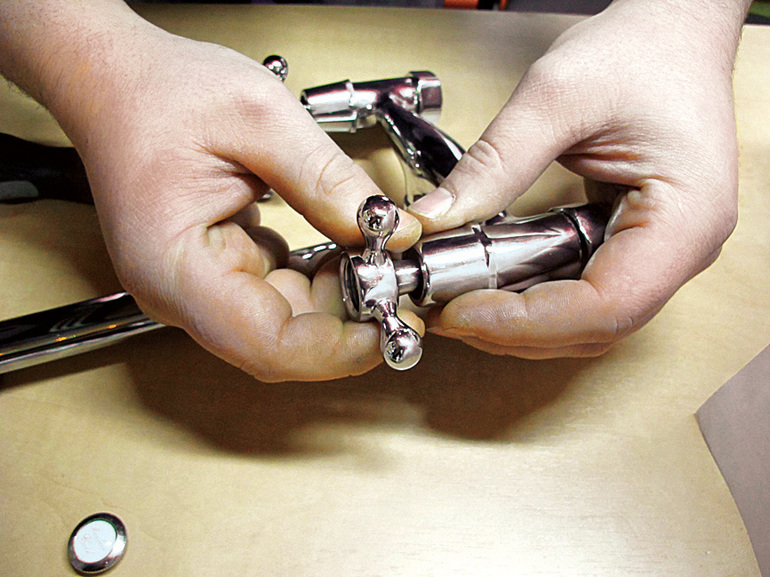
- wrong diameter of the part;
- poor water quality - due to falling of sand grains or pieces of rust under the gum, it can deform and become unusable;
- the gasket is made of low-quality material;
- during assembly of the tap, the seal was skewed.
But even with all the conditions for the correct installation of water mixers in the kitchen or in the bathroom, the gaskets require periodic replacement - the rubber from which they are usually made has the property to wear out over time. How to change the gasket in the faucet is easy for anyone to understand, even if he is not familiar with the device of plumbing mechanisms.
Diagnosis of problems in the water supply will help to establish exactly where and which rubber part needs to be replaced. It is possible to eliminate leakage by replacing the rubber seal only in cranes of a rotary structure. Signs that will help determine the location of the breakdown:
- Leakage of water directly from the mixer indicates that valve installation requires replacement. Such a breakdown is most common.
- In case of leaks from crane valves, it is necessary to replace the rubber product between the mixer body and the valve heads.
Seals on hot water valves often fail, but replacing gaskets is best done on both taps. This will allow you to be sure of the reliable operation of the plumbing system for a long time.
Appointment and types of sealants
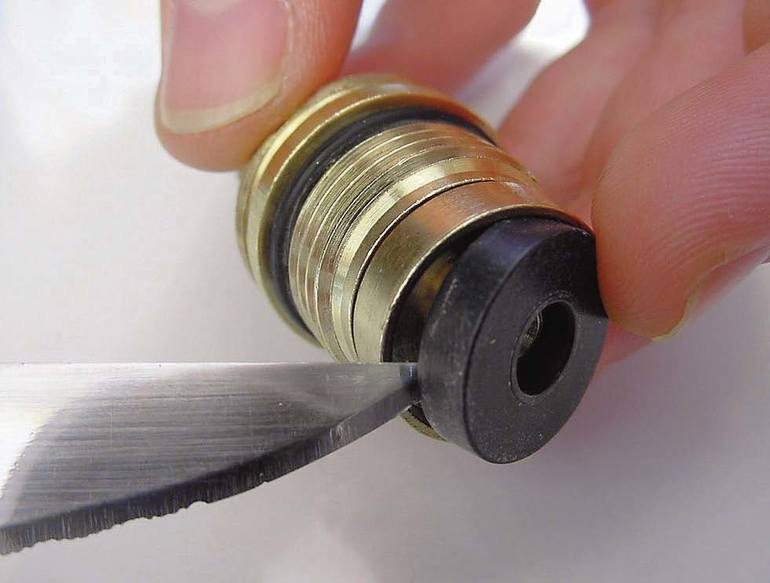
All types of plumbing locking and control mechanisms, regardless of installation location and destination, in the closed state should not allow leaks and completely block the water at the point of tapping or the end points of the consumer water supply. For this purpose, special gaskets made of different materials are used.
They are installed on the locking rods of the mixers or the movable parts of the faucet box, thereby achieving complete tightness of the adjacent parts of the water fittings. Before proceeding directly to plumbing, it is advisable to decide which product to choose for replacement. Gaskets are made of such materials:
- rubber;
- silicone;
- paronitis;
- ftoroplast.
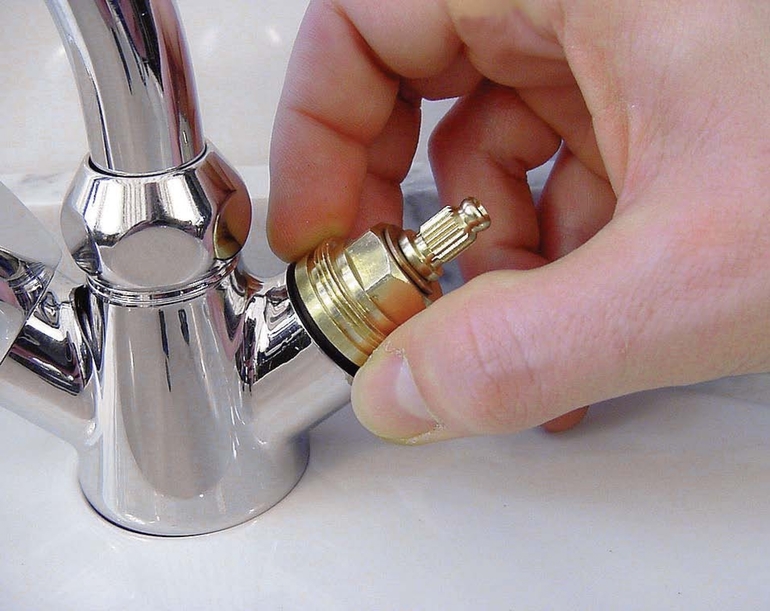
The choice of a sealant also depends on its purpose - its dimensions will be different for a crane box, radiator or mixer. Denote them in inches and fractions of an inch, for example, ¾ ″ - three quarters of an inch. The most common plumbing products made of rubber, due to their good performance.
They withstand temperatures up to 100 ° C and pressures up to 25 bar. Such conditions are rarely found in ordinary water pipes, so rubber products are quite enough to prevent leaks in kitchen fixtures and radiator valves located in residential premises. Properties of rubber gaskets:
- sufficient fatigue strength;
- low water permeability;
- high abrasion resistance;
- low gas permeability;
- insulating ability from electricity;
- cheapness.
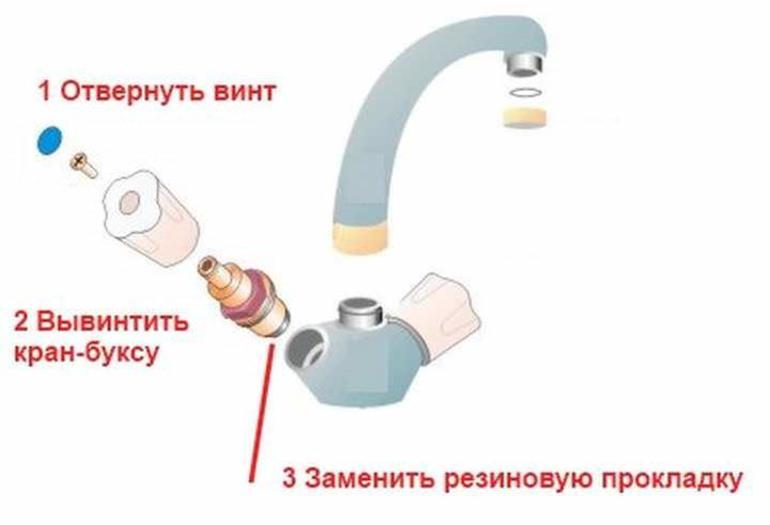
In plumbing, only monolithic rubber is used.The best tightness of the connection is ensured if the clamping nut tightens once. Re-rubber seals are not used, since when they are pressed again, their water-insulating properties deteriorate.
Paronite and silicone gaskets are more expensive than rubber, but can withstand higher temperatures and pressures. They are used mainly for sealing flange joints, but such gaskets are also advisable to use in a kitchen faucet, bath and shower faucet, when connecting the faucet to the diverter. Fluoroplastic products in residential buildings are used only for sealing heating system units. They are highly resistant to twisting joints and prevent leakage even after repeated deformations.
Preparatory stage
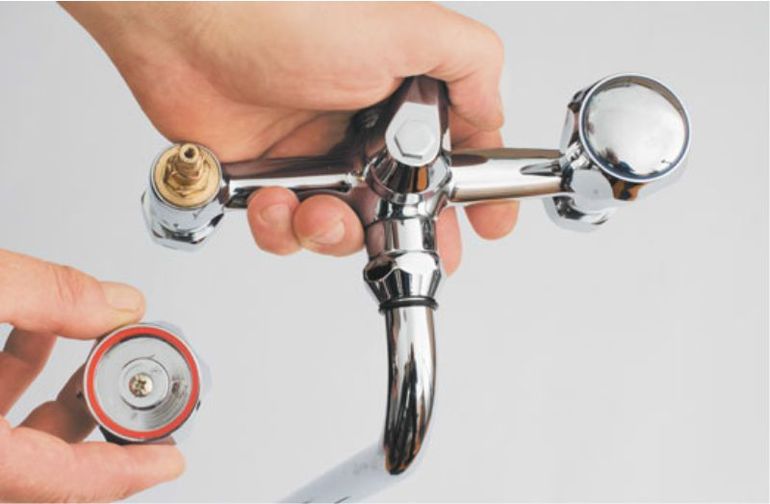
Before changing the gasket in the mixer tap, you need to find out if it is possible to completely shut off the supply of cold and hot water in the house. Typically, floor valves are located on the water pipes in the bathroom or toilet. If this is not possible, then you will have to block the water at the entrance to the house or apartment, otherwise it will be impossible to carry out repair work under pressure or is fraught with flooding of the neighbors. After blocking the water, you need to wait until the remaining liquid goes into the water supply.
Immediately before the replacement, you need to find out the diameter of the required gasket, buy or cut it. If the size is unknown, you can purchase a repair kit consisting of rubber seals of different diameters. Working conditions should be comfortable: you need to provide yourself with free access to the crane and remove everything unnecessary from under your feet. It is advisable to cover the bottom of the bathtub, sink or shower tray with rags or cardboard so as not to damage it when metal objects fall.
It is better to accumulate a reserve in a separate container before the water is shut off - in the process of work, there is almost always a need to flush any parts of the crane mechanism from debris and rust. The list of necessary tools:
- wrenches of different sizes or adjustable wrench;
- Phillips and flat head screwdrivers;
- pliers;
- sharp scissors with small blades or a paint knife.
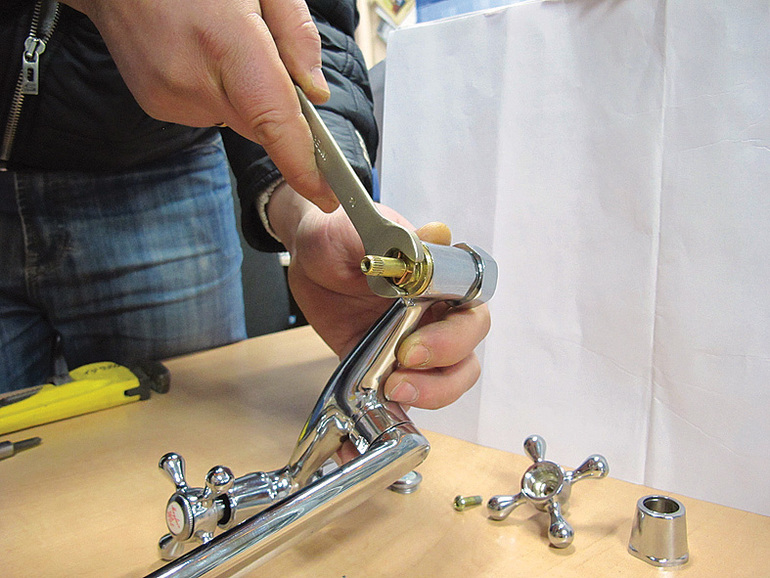
To completely seal the joints, you also need tow or modern materials - FUM tape and sealant. If you plan to make a gasket with your own hands, then you need to stock up on sheets of rubber up to 3 mm thick. When unscrewing or assembling the mixer, you must consider what material it is made of. For example, silumin, common among low-cost models, is fragile and can break if excessive efforts are made.
DIY padding
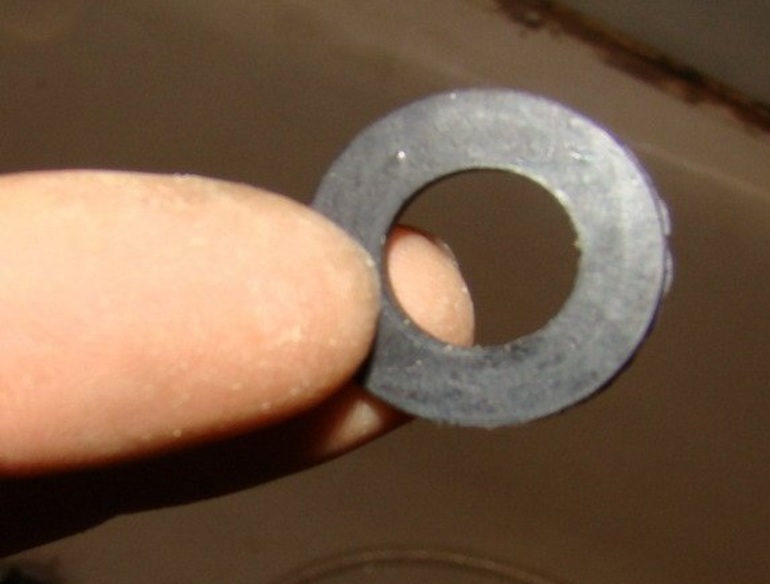
At present, it is not difficult to choose a sealant for any type of mixer. For this, it is enough to take an old one for a sample and purchase a similar one in a distribution network. But sometimes the necessary part is not available or it is required very urgently. In this case, the gasket can be done with your own hands. The sealant for the connecting thread is cut from a sheet of rubber or silicone using sharpened scissors. The diameter of the new part should be slightly larger than the transverse size of the crane body. First, it is better to make cuts with a knife in the center of the workpiece, and cut the inside with scissors.
The resulting circle should have the same diameter as the part to be sealed. With your own hands, you can also make a stem cuff for the axle box: cut a circle of the same diameter as the crane body and make a hole in it for the mounting bolt. A 2-3 mm diametric incision will prevent the cuff from humming. Nevertheless, even a well-made seal will not last long enough, so it is advisable to replace it with a factory part as soon as possible.
Repair of locking devices
Gaskets for almost all types of household faucets are sold in construction or hardware stores, but before replacing them, you need to determine the types of shut-off valves installed in the repaired plumbing fixture. This is easy to do, guided by the appearance of the locking device and some indirect signs.
Worm gears
They are equipped with faucets with two full-turn axle boxes, during rotation of which the rod with a sealant at the end lowers or rises. Cold water is supplied and blocked through one of them, hot water through the other. Opening to full pressure or full overlap is carried out by several full turns of the external flywheel of the shut-off valve. In such mechanisms, water can flow:
- from under the rubber of the crane axle box;
- along the stem towards the valve;
- from the spout when the valves are completely closed.
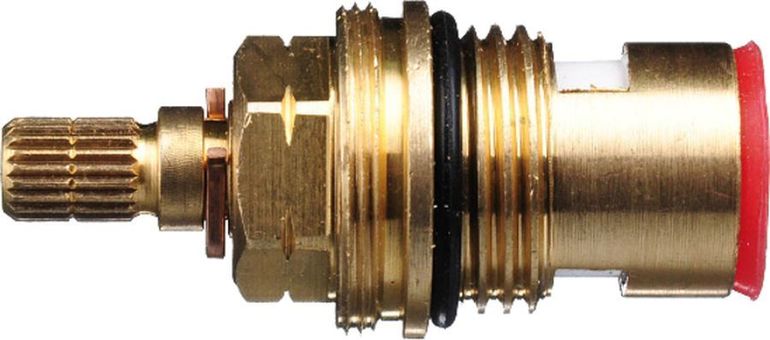
To replace the sealing rubber, first with a knife or a screwdriver, pry off and remove the decorative linings. They are usually blue in taps with cold water and red in hot taps. Then a fixing bolt is held out to hold the valve, the head of which is removed with a suitable size adjustable wrench or wrench. The removed mechanism is inspected and the worn seal is removed.
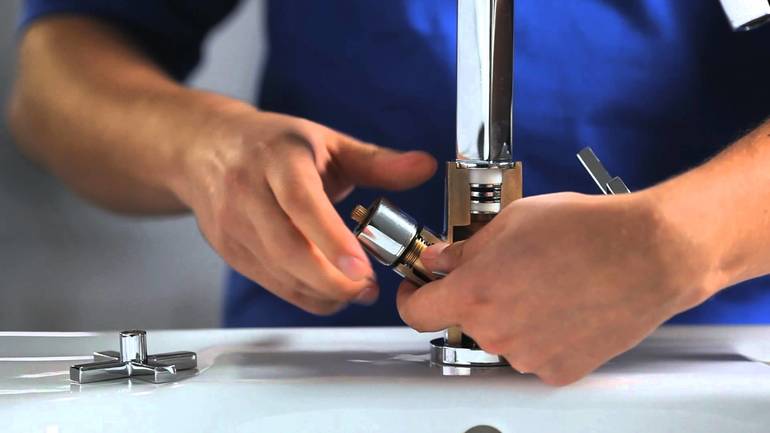
After changing the gasket in the mixer tap, the device is assembled in the reverse order. If water continues to flow along the stem, the oil seal must be changed. To do this, clamp the axle box with a vise or remove it, fixing it with a second wrench. As a stuffing box on the thread, you can use tow or synthetic gasket.
Ball Valves
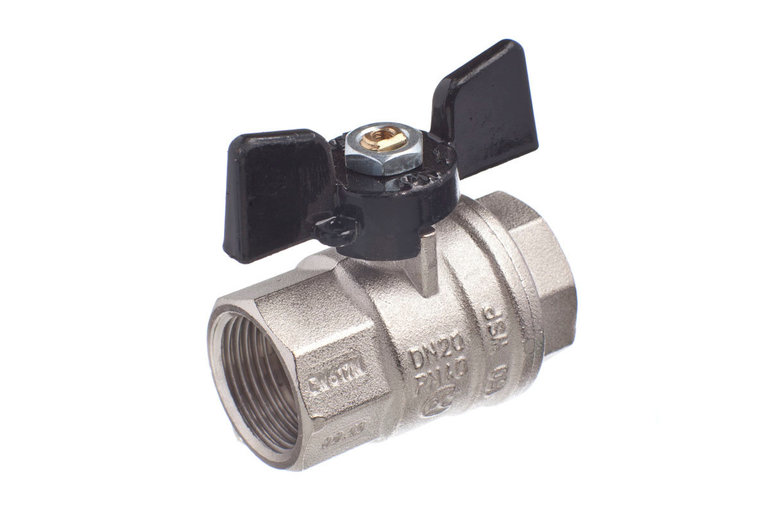
They are simple in construction and reliable, therefore they are often used in the design and installation of water supply systems. The main part of the mechanism is a ball in which a hole is drilled. The flow of water is regulated by a lever that turns the ball of the tap. To replace the gasket, the lever or “wing” of the valve is loosened by unscrewing the nut with the adjustable wrench, which secures the rotary mechanism.
After removing it, the worn seal is replaced and the device reassembled. In this case, the moving parts of the device are inspected and cleaned. If the crane has a large production of metal, then the device should be replaced entirely.
Single lever mixers
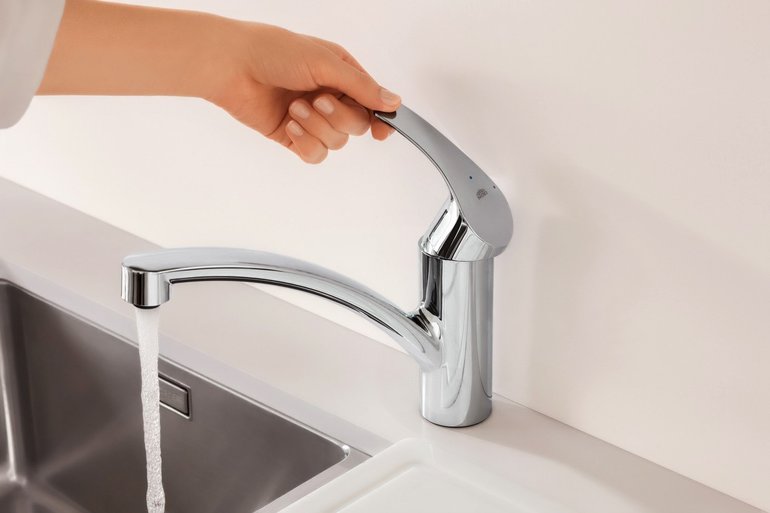
The main element of this device is a hollow ball with several holes. Using the handle, their location relative to the inlet and outlet channels is changed, which controls the temperature and pressure of the water. The materials from which the balls of such mixers are made are durable, but gaskets that make the system airtight often fail. Replacing gaskets in lever mixers requires special attention and accuracy.
Parts in the process of dismantling the crane should be laid out in order, so as not to get confused during the reassembly of the mixer. For different models, the operating procedure may differ, but you need to start replacing the gaskets by removing the decorative plug on the lever. After that, unscrew the screw fixing the handle and remove it.
Now you can start dismantling the cap and cam with gasket and washer. Then the ball is removed, the o-rings are replaced and the valve is assembled in the reverse order. The seal rings must be carefully installed in the grooves provided for this with a wide screwdriver. It is advisable to coat its end with plumbing grease to avoid tearing and deformation of the gaskets. The main thing in dismantling the lever mixers is not to spoil the external coating of the tap.
Preventative measures
In order not to have to deal with leaks, it is advisable to take care to prevent them. Timely prevention will delay the repair of valves and taps. Measures to prevent breakdowns include:
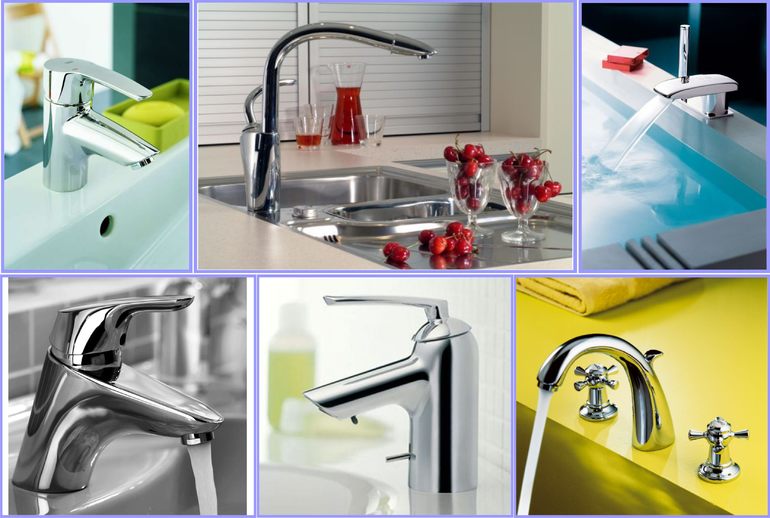
- the choice of plumbing products and spare parts for them in quality and not in price;
- the use of water filters, especially if water is supplied through old worn pipes;
- timely care - disassembly of crane mechanisms, cleaning and lubrication of moving elements;
- faucet valves must be fully tightened, but without excessive force that could damage the seals.
New parts to ensure tightness must be of high quality and properly mounted. Only in this case, expensive water-pressure devices will serve for a long time and reliably.
- How to choose a vacuum cleaner taking into account the characteristics of the house and coatings?
- What to look for when choosing a water delivery
- How to quickly create comfort at home - tips for housewives
- How to choose the perfect TV - useful tips
- What to look for when choosing blinds
- What should be running shoes?
- What useful things can you buy in a hardware store
- Iphone 11 pro max review
- Than iPhone is better than Android smartphones



